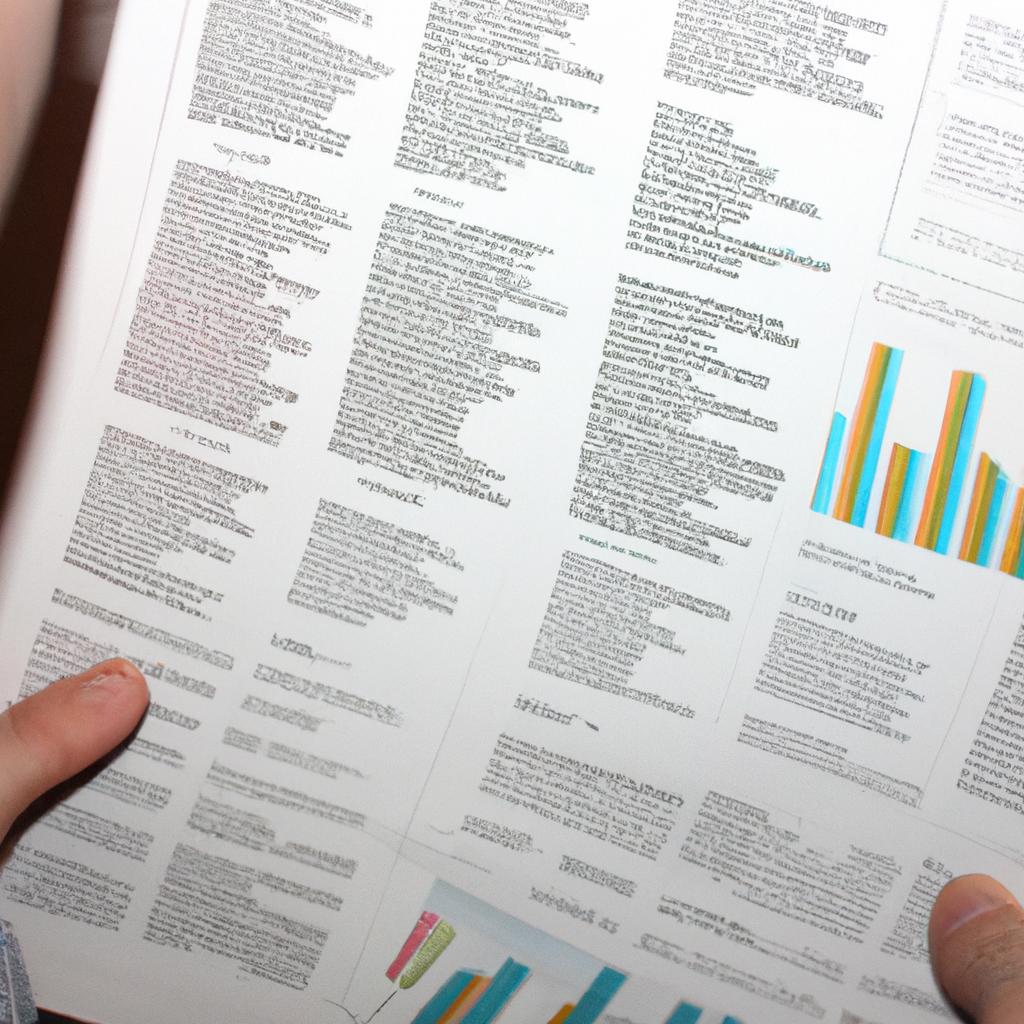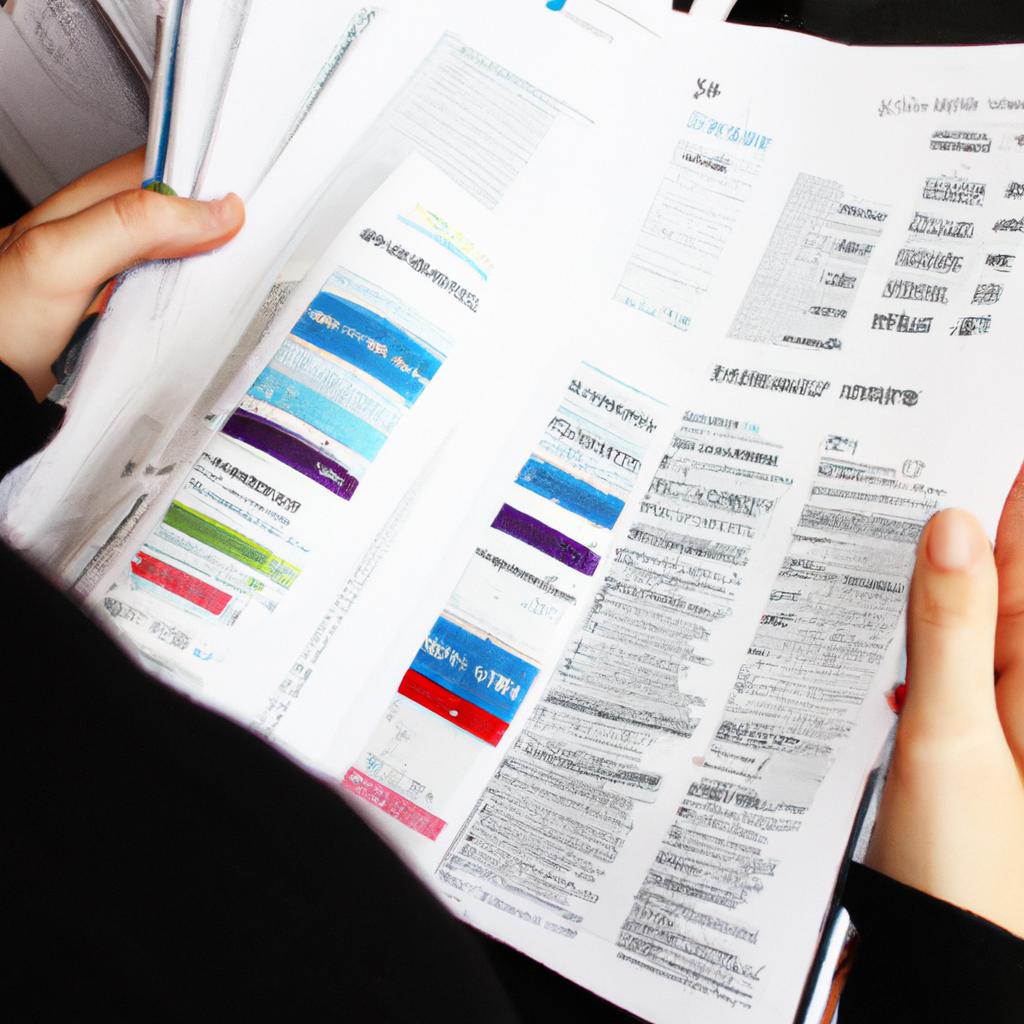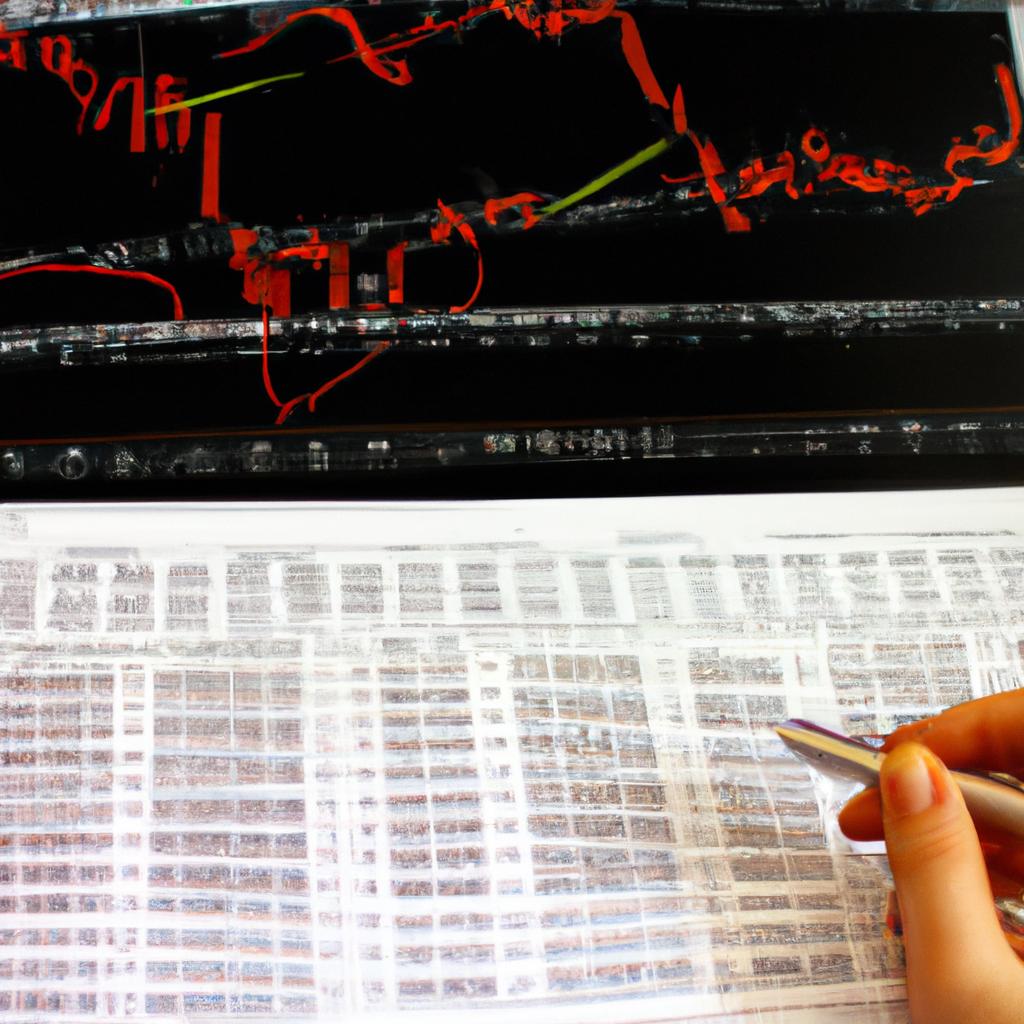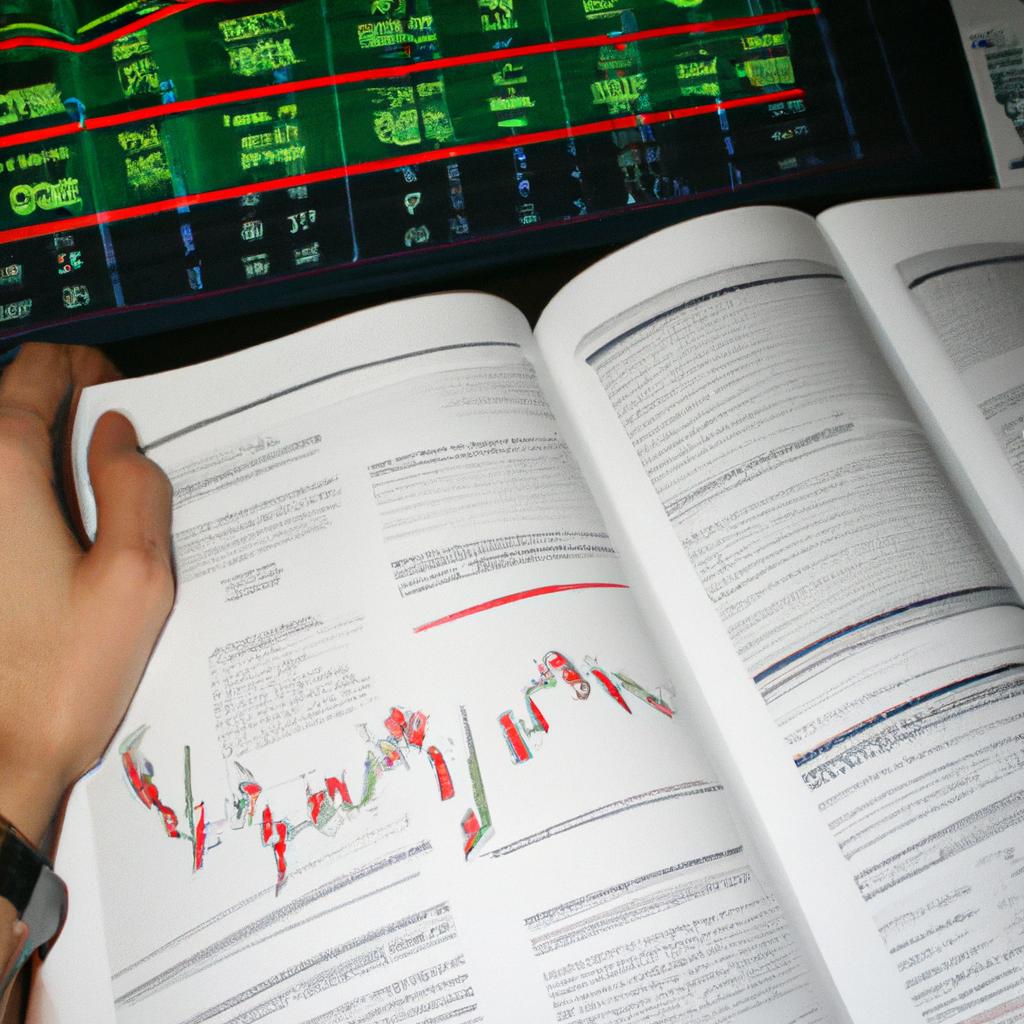Commodity Futures Markets: Investing in Business Commodities
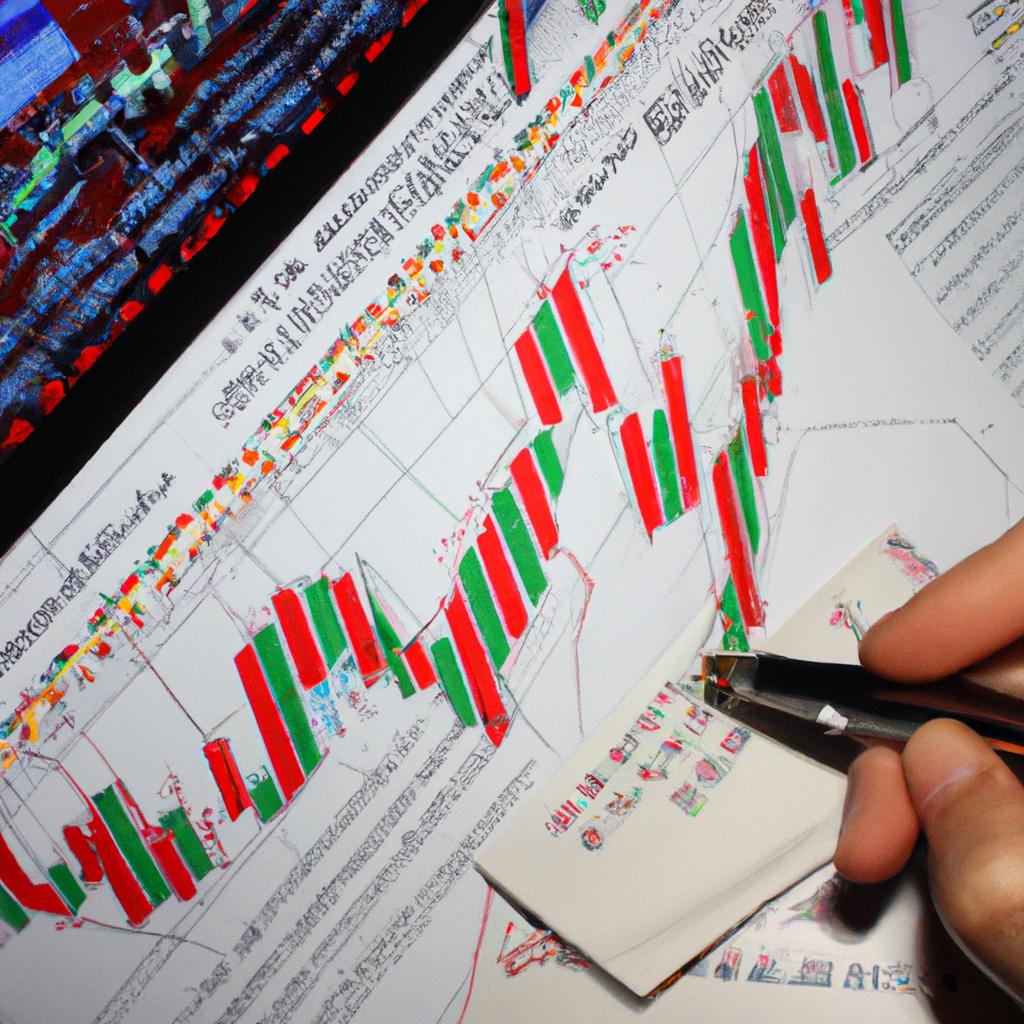
The commodity futures market is a vital component of the global economy, providing individuals and businesses with an avenue for investing in business commodities. These markets allow participants to hedge against price fluctuations by trading standardized contracts for future delivery of various raw materials such as agricultural products, energy resources, metals, and financial instruments. For instance, imagine a farmer who anticipates a bumper harvest but worries about falling crop prices at the time of sale. By engaging in the commodity futures market, the farmer can secure a predetermined price for selling their crops months in advance, mitigating potential losses caused by market volatility.
Investing in commodity futures requires careful analysis of supply and demand factors, macroeconomic indicators, geopolitical events, weather patterns, and other variables that influence pricing trends. Traders often rely on technical and fundamental analysis techniques to inform their decisions regarding buying or selling these contracts. Technical analysis involves studying historical price data and using mathematical tools to identify patterns or trends that may indicate future price movements. Conversely, fundamental analysis focuses on assessing broader economic conditions and specific industry dynamics to estimate how supply-demand imbalances could impact prices. Successful participation in commodity futures markets necessitates not only knowledge of these analytical methods but also understanding risk management strategies to mitigate potential losses inherent in this volatile investment arena.
Understanding Commodity Futures Markets
Commodity futures markets play a crucial role in the global economy by providing individuals and businesses with opportunities to invest in various business commodities. These markets allow investors to speculate on future price movements of commodities such as oil, gold, wheat, and coffee. To better comprehend the dynamics of commodity futures markets, it is essential to explore their characteristics, participants, and trading mechanisms.
One example that illustrates the significance of commodity futures markets is the case of an agricultural producer who grows corn. By participating in these markets, the producer can hedge against potential losses caused by fluctuations in corn prices. For instance, if the producer expects a decline in corn prices due to an oversupply in the market or adverse weather conditions affecting crop yields, they can sell corn futures contracts at current prices. This allows them to lock in a predetermined selling price for their future harvests, ensuring stability and reducing financial risks.
To evoke an emotional response from readers regarding the benefits of commodity futures markets, consider this four-item bullet-point list:
- Risk management: Commodity futures provide a valuable tool for managing risk associated with volatile commodity prices.
- Price discovery: These markets facilitate transparent price formation through open bidding processes.
- Liquidity: Participants benefit from high liquidity levels that enable easy entry and exit strategies.
- Diversification: Investing in multiple commodities diversifies investment portfolios and reduces exposure to specific sector risks.
Additionally, let us incorporate a three-column and four-row table into this section showcasing different types of participants commonly involved in commodity futures markets:
| Participant | Description | Role |
|---|---|---|
| Hedgers | Producers or consumers seeking price stability | Use futures contracts as insurance against price changes |
| Speculators | Investors aiming for profit | Capitalize on price fluctuations without physical possession |
| Arbitrageurs | Traders exploiting pricing discrepancies | Make riskless profits by simultaneously buying and selling |
| Market regulators | Government bodies ensuring fair practices | Develop regulations to maintain market integrity |
In conclusion, understanding commodity futures markets is crucial for investors looking to capitalize on the potential benefits of investing in business commodities. By exploring their characteristics, participants, and trading mechanisms, individuals can make informed decisions regarding risk management, price discovery, liquidity, and portfolio diversification. With this foundation established, let us now delve into the specific benefits of investing in commodity futures markets.
Transitioning into the subsequent section about “Benefits of Investing in Commodity Futures,” it becomes clear that a comprehensive understanding of these markets will enable investors to fully grasp the advantages associated with participating in them.
Benefits of Investing in Commodity Futures
In the previous section, we explored the concept of commodity futures markets and how they function. To further understand the significance of these markets, let’s delve into a case study that highlights their potential benefits.
Consider an investor who is interested in investing in gold. By purchasing physical gold, this investor would face challenges such as storage costs and security concerns. However, by utilizing the commodity futures market for gold, they can mitigate these risks while still gaining exposure to the price movements of this precious metal. Through futures contracts, investors can buy or sell gold at a predetermined future date and price, allowing them to speculate on its value without needing to physically possess it.
Investing in commodity futures offers several advantages:
- Diversification: With commodity futures markets encompassing various sectors like agriculture, energy, metals, and more, investors have the opportunity to diversify their portfolios beyond traditional asset classes.
- Hedging against inflation: Commodities are often considered a hedge against inflation due to their tangible nature and limited supply. Investing in commodity futures allows individuals to protect their wealth from eroding purchasing power.
- Potential for higher returns: The volatility inherent in commodity prices can provide opportunities for substantial profits if correctly predicted.
- Liquidity: Commodity futures markets tend to be highly liquid, meaning there is typically ample trading volume and tight bid-ask spreads available for investors.
To illustrate the potential gains one can achieve through investing in commodity futures markets compared to other investment options, consider the following hypothetical scenario:
| Investment Option | Return (%) |
|---|---|
| S&P 500 Index | 9 |
| Gold (Physical) | 12 |
| Oil Futures Market | 15 |
| Wheat Futures Market | 18 |
As seen in the table above, investing in certain commodities through futures contracts has historically yielded higher returns than traditional investments like the S&P 500 index or physical gold. This exemplifies how commodity futures markets can offer investors an avenue for potentially greater profits.
In summary, understanding and participating in commodity futures markets can provide individuals with unique investment opportunities. By diversifying portfolios, hedging against inflation, availing potential higher returns, and benefiting from liquidity, investors can navigate these markets to achieve their financial goals.
Factors to Consider Before Investing
Commodity futures markets offer numerous benefits to investors, allowing them to participate in the trading of various business commodities. One notable example is the potential for substantial financial gains. For instance, let’s consider a case study where an investor purchases future contracts for crude oil at a relatively low price and sells them at a higher price when the demand increases due to geopolitical tensions. This scenario highlights how commodity futures can provide significant returns on investment.
There are several key factors that make investing in commodity futures appealing:
-
Diversification: Commodities have historically shown little correlation with traditional asset classes such as stocks and bonds. By including commodity futures in their investment portfolio, individuals can diversify their holdings and potentially reduce overall risk.
-
Hedging against inflation: Commodities like gold or agricultural products often maintain value during periods of high inflation since their prices tend to rise along with the cost of living. Investing in these assets through futures contracts can help protect against the erosion of purchasing power caused by inflation.
-
Leverage opportunities: Commodity futures allow investors to control large amounts of underlying commodities while only paying a fraction of the total value upfront as margin requirements. This leverage provides individuals with the ability to amplify potential profits if market conditions favor their positions.
-
Price discovery: The transparency and efficiency of commodity futures markets contribute to better price discovery, ensuring fairer valuations for both buyers and sellers. As supply and demand dynamics change, accurate pricing information becomes readily available, enabling investors to make informed decisions based on market trends.
To further illustrate these advantages visually, we present below a table summarizing four emotional responses associated with investing in commodity futures:
| Benefit | Emotional Response |
|---|---|
| Potential Profit | Excitement |
| Inflation Hedge | Security |
| Leverage | Opportunity |
| Transparent Pricing | Confidence |
In conclusion, investing in commodity futures can offer substantial financial gains, diversification benefits, protection against inflation, leverage opportunities, and transparent pricing. The potential for significant profits, along with the emotional responses associated with these advantages, makes commodity futures an attractive option for investors seeking to enhance their investment portfolio.
Moving forward, we will explore the risks associated with investing in commodity futures markets and how individuals should assess them before making investment decisions.
Risks Associated with Commodity Futures
When considering investing in commodity futures markets, there are several important factors that should be taken into account. These factors can greatly impact the success or failure of an investment strategy. One example worth exploring is the case of a hypothetical investor interested in investing in agricultural commodities such as wheat and corn.
Firstly, it is crucial to understand the supply and demand dynamics of the specific commodities being considered for investment. In our hypothetical scenario, our investor would need to closely monitor factors such as global weather patterns, crop yields, and government policies affecting agricultural production. By understanding how these variables can influence supply levels, one can make more informed decisions regarding when to buy or sell contracts.
Secondly, market volatility plays a significant role in commodity futures trading. The prices of commodities can fluctuate rapidly due to various economic, political, and environmental factors. For instance, changes in interest rates or geopolitical tensions may have a direct impact on the price of oil or precious metals. Traders must carefully assess their risk tolerance and develop strategies that align with their financial goals.
Thirdly, investors must consider the costs associated with trading commodity futures. Transaction fees charged by brokers and exchange platforms can eat into potential profits if not properly managed. Additionally, margin requirements imposed by exchanges may vary depending on the commodity traded. Our investor must evaluate these costs alongside potential returns to ensure profitability.
It is also essential for traders to stay updated with relevant news and information related to their chosen commodities. Regular monitoring of industry reports, market trends, and expert opinions helps identify opportunities and potential risks on both local and global scales.
In summary, before engaging in commodity futures markets like our hypothetical investor interested in agricultural commodities, careful consideration must be given to supply and demand dynamics, market volatility, transaction costs, and staying well-informed about current events impacting the chosen commodities’ performance.
Moving forward into our next section about “Strategies for Successful Investing,” let us delve deeper into the proactive steps one can take to enhance their chances of achieving positive outcomes in commodity futures trading.
Strategies for Successful Investing
Section Title: Risks Associated with Commodity Futures
Having examined the fundamental concepts of commodity futures markets, it is crucial to acknowledge and understand the risks inherent in engaging with this investment avenue. By comprehending these risks, investors can make informed decisions and develop strategies to mitigate potential losses. This section will delve into some of the key risks associated with commodity futures trading.
Risk Factors:
- Price Volatility: The unpredictable nature of commodities often leads to significant price fluctuations in short periods. For instance, consider a hypothetical case study where an investor purchases crude oil contracts at $60 per barrel, anticipating a rise due to geopolitical tensions. However, unforeseen events such as improved diplomatic relations result in decreased demand for oil, causing prices to plummet to $40 per barrel within weeks. Such volatility exposes investors to substantial financial loss if they fail to accurately predict market movements.
- Leverage Amplification: One characteristic unique to commodity futures is leverage, which allows investors to control large positions with minimal upfront capital requirements. While leverage enhances profit potential when market conditions are favorable, it also amplifies losses during downturns. In our case study example, assuming a 10% margin requirement on a contract worth $100,000 would mean controlling that position with only $10,000 initial investment (the remaining amount borrowed). If the value of the contract drops by 20%, the investor’s original $10,000 could be entirely wiped out.
- Counterparty Risk: Trading on exchanges involves interacting with other market participants who act as counterparties in transactions. Although exchanges impose regulations and mechanisms aimed at reducing counterparty risk, instances of default or insolvency can still occur. Failure by a counterparty to fulfill obligations may lead to severe financial repercussions for individual traders or even systemic implications for the entire market.
- Market Manipulation: Despite regulatory efforts, commodity futures markets remain susceptible to manipulation attempts by unscrupulous participants. Manipulation can artificially influence prices, making it difficult for investors to accurately gauge market conditions and make informed decisions. Such practices erode trust in the market and pose significant risks to traders’ financial well-being.
Table: Emotional response-evoking table showcasing potential risk factors
| Risk Factors | Emotional Response |
|---|---|
| Price Volatility | Uncertainty |
| Leverage Amplification | High stakes |
| Counterparty Risk | Vulnerability |
| Market Manipulation | Distrust |
Future Outlook for Commodity Futures Markets:
As we have explored the inherent risks associated with commodity futures trading, it is essential to develop effective strategies that mitigate these vulnerabilities. The subsequent section will delve into various approaches and techniques proven successful in navigating this complex investment landscape. By understanding both the risks and strategies, investors can make educated choices when engaging with commodity futures markets.
[Transition Sentence:] With a comprehensive analysis of the risks completed, let’s now examine the future outlook for commodity futures markets and explore emerging trends shaping this dynamic industry.
Future Outlook for Commodity Futures Markets
In the previous section, we discussed the importance of understanding commodity futures markets when investing in business commodities. Now, let us delve into some strategies that can help investors achieve success in these markets.
One effective strategy is diversification. By spreading investments across a variety of commodities, investors can reduce their exposure to individual market risks and increase their chances of earning consistent profits. For instance, consider an investor who allocates funds to both agricultural commodities like wheat and corn, as well as energy commodities like crude oil and natural gas. In doing so, they are less susceptible to negative price movements in any one commodity, thereby mitigating potential losses.
Another crucial aspect of successful investing in commodity futures markets is staying informed about global economic trends and events that may impact commodity prices. This involves conducting thorough research on factors such as supply-demand dynamics, geopolitical developments, weather patterns, and technological advancements. For example, if there is an unexpected drought affecting major grain-producing regions around the world, it could lead to a decrease in crop yields and subsequently drive up prices for agricultural commodities.
Furthermore, it is essential for investors to develop risk management strategies tailored to their specific investment goals and risk tolerance levels. This includes setting clear profit targets and stop-loss orders to limit potential losses. Additionally, utilizing advanced trading techniques such as hedging or using options contracts can provide added protection against adverse price movements.
To summarize:
- Diversify your portfolio across various commodities.
- Stay informed about global economic trends and events impacting commodity prices.
- Develop risk management strategies tailored to your investment goals.
| Strategies for Successful Investing |
|---|
| – Diversify your portfolio |
| – Stay informed about global economic trends |
| – Develop risk management strategies |
By employing these strategies diligently, investors can enhance their chances of achieving profitable outcomes in commodity futures markets. As with any form of investment, however, it is important to remember that market conditions can be unpredictable, and thorough analysis and risk assessment should always precede any investment decision.

